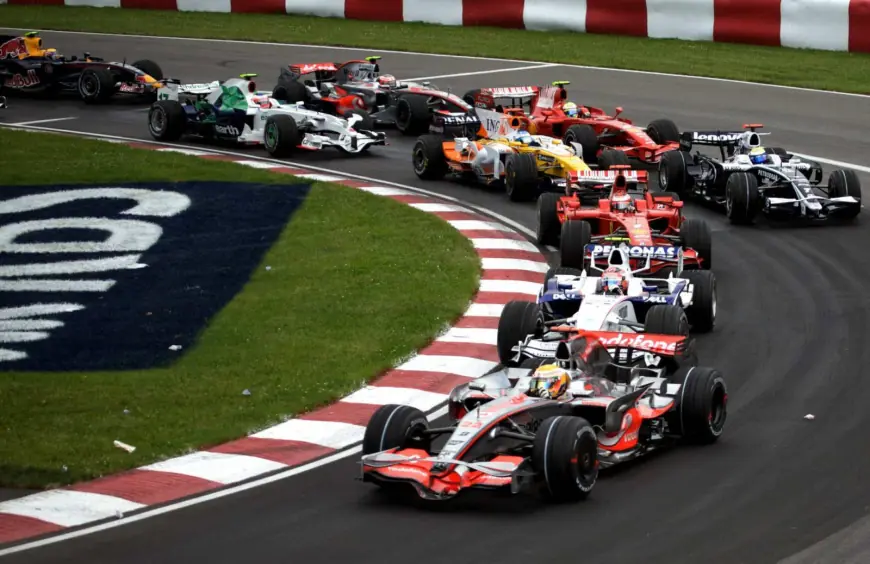The Importance of DRS for Overtaking: A Deep Dive into F1 Racing Strategy
Fans watching F1 streams on the web or through transmissions can see the show unfurl as vehicles use DRS to challenge each other for positions.

In the fast universe of Formula 1 hustling, surpassing is one of the most thrilling components of a race. Be that as it may, passing another vehicle is generally difficult, particularly on tracks where the optimal design of a vehicle can make it hard for a driver to draw near to the point of taking action. This is where DRS (Drag Decrease Framework) becomes possibly the most important factor. In this article, we'll investigate why DRS is critical for overwhelming in Formula 1 and what it means for races.
What is DRS in Formula 1?
Prior to digging into why DRS is significant for surpassing, it's fundamental to comprehend what DRS is. The Drag Decrease Framework is a component intended to lessen the streamlined drag on an Formula 1 vehicle, which, thus, speeds up. The framework permits a driver to open a fold on the back wing of the vehicle, diminishing downforce and bringing down drag, consequently giving a critical lift in straight-line speed.
Nonetheless, DRS isn't accessible to drivers consistently. The framework must be enacted when a driver is in the span of one moment of the vehicle in front, and it must be utilized in assigned zones on the track. This limitation guarantees that DRS is involved decisively to help with overwhelming instead of giving an extremely durable benefit.
The Job of DRS in Surpassing
One of the most difficult parts of hustling is the specialty of surpassing. In Formula 1, the streamlined impacts of a vehicle in front can cause a "grimy air" impact, making it difficult for the accompanying vehicle to keep up with speed and draw near to the point of endeavoring a pass. This is where DRS becomes critical.
At the point when a driver is in no less than one moment of the vehicle ahead, they can enact DRS. By opening the back wing fold, the vehicle encounters a decrease in drag, permitting it to acquire speed and close the hole between the two vehicles. This eruption of speed is much of the time to the point of empowering the driver to take action on the vehicle ahead and complete the surpassing move.
Why DRS is Essential for Surpassing
Upgraded Speed for Close Hustling
Formula 1 races are about accuracy and speed. Without DRS, the vehicles behind would battle to take actions in light of the fact that the optimal design of the main vehicle would disturb the wind stream and diminish coming up next vehicle's downforce. DRS balances this by giving the following vehicle an extra speed help, making it simpler to endeavor overwhelming. This is particularly significant in follows long straights, where the DRS zones consider rapid passes.
Empowering More Surpasses
Before, overwhelming in Formula 1 was an uncommon event because of the streamlined difficulties and the idea of certain circuits. With the presentation of DRS, the quantity of surpasses in races has expanded altogether. The framework has prompted really exciting on target activity, making races more invigorating for the two drivers and fans. The capacity to overwhelm all the more effectively empowers vital hustling and gives a more unique and capricious race.
Advancing Fair Contest
DRS gives a level battleground to drivers, particularly when one vehicle is fundamentally quicker than the other. Without DRS, the quicker vehicle would be stuck behind the more slow one, incapable to take action because of the streamlined disturbance made by the vehicle ahead. With DRS, the following driver has a fair opportunity to surpass and contend, making races more cutthroat.
Strategic Use by Drivers
While DRS gives a speed help, it doesn't ensure a simple pass. Drivers should be vital in their utilization of DRS. Once in a while, drivers will hold on until the right second to enact the situation, guaranteeing that they have the most obvious opportunity to surpass. This adds a layer of system to the race, as drivers should choose when to involve DRS for the greatest benefit.
Expanded Fan Commitment
The utilization of DRS has made Formula 1 races more captivating for fans. The capacity to see drivers endeavoring surpasses, particularly in rapid zones, makes for a really exciting encounter. Fans watching F1 streams on the web or through transmissions can see the show unfurl as vehicles use DRS to challenge each other for positions.
What DRS Means for F1 Live Streams
For fans watching F1 live streams, DRS zones carry an additional degree of energy to races. The expectation of when drivers will enact DRS and what it will mean for the race result adds show to the live insight. Whether you're watching a race on your television or streaming it on the web, DRS upgrades the activity and keeps fans as eager and anxious as can be.
Also, as DRS zones frequently lead to energizing surpasses and position changes, those watching F1 streams can expect consistent changes in the list of competitors, which adds to the capriciousness of the race. The perceivability of these occasions during a live stream further hoists the general review insight.
End
In rundown, the Drag Decrease Framework (DRS) is a vital part in Formula 1 dashing, especially with regards to surpassing. It permits drivers to conquer streamlined difficulties, making it simpler to close the hole and pass different vehicles. DRS adds to additional intriguing and dynamic races, which at last advantages the two drivers and fans. As F1 live streams and F1 streams keep on filling in prevalence, the job of DRS in making exciting on target activity is obvious.
For fans who need to stay aware of each and every DRS-empowered surpass and race update, tuning into live floods of Formula 1 races is the most ideal way to encounter the full power of this fast game.












